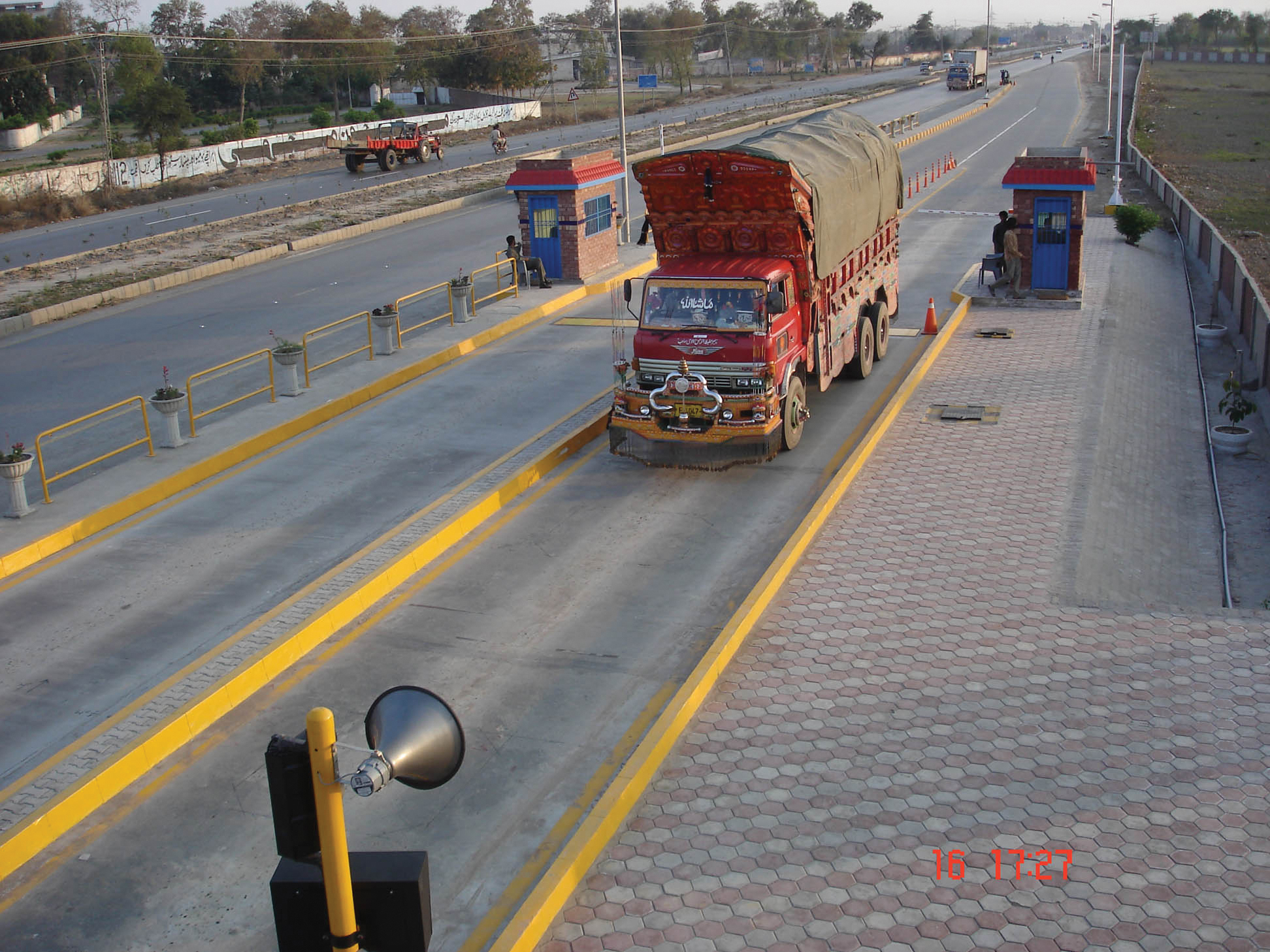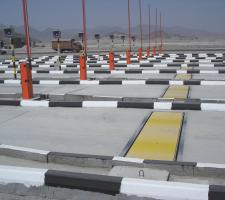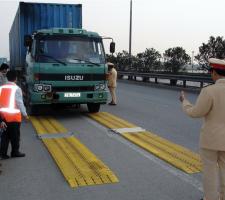
Innovative use of truck weighing technology is growing as strategies aimed at reducing numbers of overweight vehicles gather momentum.
Business is generally good at present in the truck weighing sector in general, and weigh-in-motion (WIM) technology in particular, according to leading suppliers of systems serving to help reduce overloading. Strategies aimed at deterring excessive truck loading – cutting damage to road networks and risks to safety – vary considerably worldwide, with some governments dragging their heels on activation of expected programmes of weight monitoring and enforcement. Others are being more proactive in recognition of the benefits to be gained from reducing overloading; and where the necessary fixed infrastructure or mobile scales are being rolled out, highway authorities are increasingly making use of innovative systems.According to the managing director of UK-based Central Weighing, Richard Stokes, his company’s exports grew four fold in 2011 as momentum of weight control strategies builds in developing countries. In Vietnam, for instance, around 40 orders have been received for Central Weighing’s cable-free Cheklode WIM system. Featuring portable scales, wireless communication and computer software including a web-based interface, Cheklode systems can be set up and operational within minutes, says Stokes. “Operating in both Vietnamese and English, Cheklode has given the country’s officers tremendous flexibilty in enforcement operations,” he adds.
Elsewhere, more than 30 WIM sites are operating in the emirate of Fujairah with automatic vehicle recognition equipment in the vicinity of quarries for checking the loading of trucks as they embark on transport of rock throughout the United Arab Emirates. The weighing data is automatically transmitted to Fujairah municipality offices via a GPRS connection for immediate processing. In India and Pakistan, similar technology is being deployed at over 300 toll locations for identification of overloaded axles and calculation of fines in accordance with national weight regulations.
Recognition for Qatar truck weigh
In the US a good number of proactive weigh programmes are operating with integrated weigh station and vehicle recognition technology. While WIM has traditionally been predominantly used for data collection in the US, new trends are emerging for its application as part of ‘virtual weigh stations’.
A leading supplier of such technology is
“This provides useful information relating to permits, past inspections and citations. With weight data obtained from WIM, probable offenders can be directed to permanent stations. Or officers downstream of the virtual weigh station can track down the trucks for side of the road inspection and weighing using portable scales.”
There are around 800 WIM installations in the US used mostly for data collection. According to Peterson, authorities are realising that such information can be applied to help enforcement agencies. “In Minnesota, for example, there are 13 WIM sites collecting data for the state DOT, which is now researching the benefits of combining visual identification technology with WIM and sharing that information with enforcement agencies,” he says. “If vehicle detection, weight and other data is collected and shared through networks, a virtual system can be created for access by enforcement agencies which are beginning to realise this presents a more cost effective solution.”
“In these countries, over 60% of vehicles weighed are grossly overloaded. Individual axle loads have been recorded
in excess of 40,000 kg. This is doing untold damage to roads and frequently introducing a safety hazard where vehicles’ stability
and braking performance are dramatically impaired,” Stokes says.
“In third world or developing countries in general, authorities are building confidence in use of WIM systems. Enforcement and collection of fines are not simple matters – there are difficulties and penalties have to be set realistically. It is difficult to impose a fine equivalent to £20 when the driver earns less than £2 a week, but authorities are realising they have got to get on top of the problem of overloading. Potentially we could be working in 30 countries, but we have to be selective.”
For illustration of variety of progress with truck weight control, look to South America. Programmes expected in Argentina and Brazil have been mothballed or failed to get going so far. Whereas the Chilean government is continuing a truck weight monitoring and enforcement strategy that dates back around 30 years. A recently published report on the economic effects of Chile’s use of fixed and portable weigh stations has revealed cost benefit ratios of 1/20 for multi lane highways and 1/27 for secondary roads (see sidebar).
The weigh station systems of Chile’s programme have been supplied by PAT Traffic, a subsidiary of United States based International Road Dynamics.
In the US a good number of proactive weigh programmes are operating with integrated weigh station and vehicle recognition technology. While WIM has traditionally been predominantly used for data collection in the US, new trends are emerging for its application as part of ‘virtual weigh stations’.
A leading supplier of such technology is Intercomp. Its vice president Eric Peterson says: “In most countries, including the US, fines cannot be assessed on the basis of WIM measurements alone. For direct enforcement purposes, WIM is used for sorting vehicles, to indicate those most likely to be overloaded for directing to a weigh station where a more accurate static measurement can take place. But there is a new trend in the US to amalgamate technology at WIM sites for adding images of the vehicle, license plate and DOT (Department of Transport) number which is unique to the owner or operator.
“This provides useful information relating to permits, past inspections and citations. With weight data obtained from WIM, probable offenders can be directed to permanent stations. Or officers downstream of the virtual weigh station can track down the trucks for side of the road inspection and weighing using portable scales.”
There are around 800 WIM installations in the US used mostly for data collection. According to Peterson, authorities are realising that such information can be applied to help enforcement agencies. “In Minnesota, for example, there are 13 WIM sites collecting data for the state DOT, which is now researching the benefits of combining visual identification technology with WIM and sharing that information with enforcement agencies,” he says. “If vehicle detection, weight and other data is collected and shared through networks, a virtual system can be created for access by enforcement agencies which are beginning to realise this presents a more cost effective solution.”
Chile’s truck weight strategy scores highly
For every million dollars the Chilean Government has invested in truck weight enforcement, $20M is being saved in maintenance of principal highways and $27M taken off costs to repair secondary roads. So says a comprehensive report published by Chile’s Ministry of Public Works late last year.
The report gives results from a study of the economic effectiveness of three decades of investment in truck weight control in Chile by the Ministry’s Department of Weighing (DoW) in partnership with PAT Traffic.
Fixed weigh stations are now operational across a substantial portion of Chile’s multi lane highways, with mobile units used on single carriageway roads. With data gathered on overloading, revenue from enforced penalties and the costs of introducing and operating weigh stations DoW has generated detailed analysis of the relationship between weight control investment and road maintenance savings. According to the report, the findings are intended to inform decisions on future strategies of investment in Chile’s road network.
The study considered a sample network of five stretches of highway totalling 700km in length and 2600km of secondary road broken down into five geographical ‘zones’. Maintenance costs with and without truck overloading were determined for each section of road from deterioration rates calculated using standard HDM4 (Highway Design & Maintenance) software. Values were inputed for a wide range of parameters on road construction and condition, climate, topography, vehicle type and axle loading.These costs were calculated for a period of 20 years and compared with expected net operational expenditure on truck weight enforcement over the same period to reflect the general design life of pavements in Chile.@@@@The results indicate 20 year reductions in maintenance of $132M for highways and $83M for secondary roads where weight control is enforced, against net operational costs of around $6.3M for fixed weigh stations (on highways) and $3.1M for mobile units (secondary roads): cost/benefit ratios are 1/20 and 1/27 respectively.
The Chilean Government has announced it intends to continue its strategy of truck weight control, with fixed weigh stations extended to cover a greater proportion of its secondary road network.













